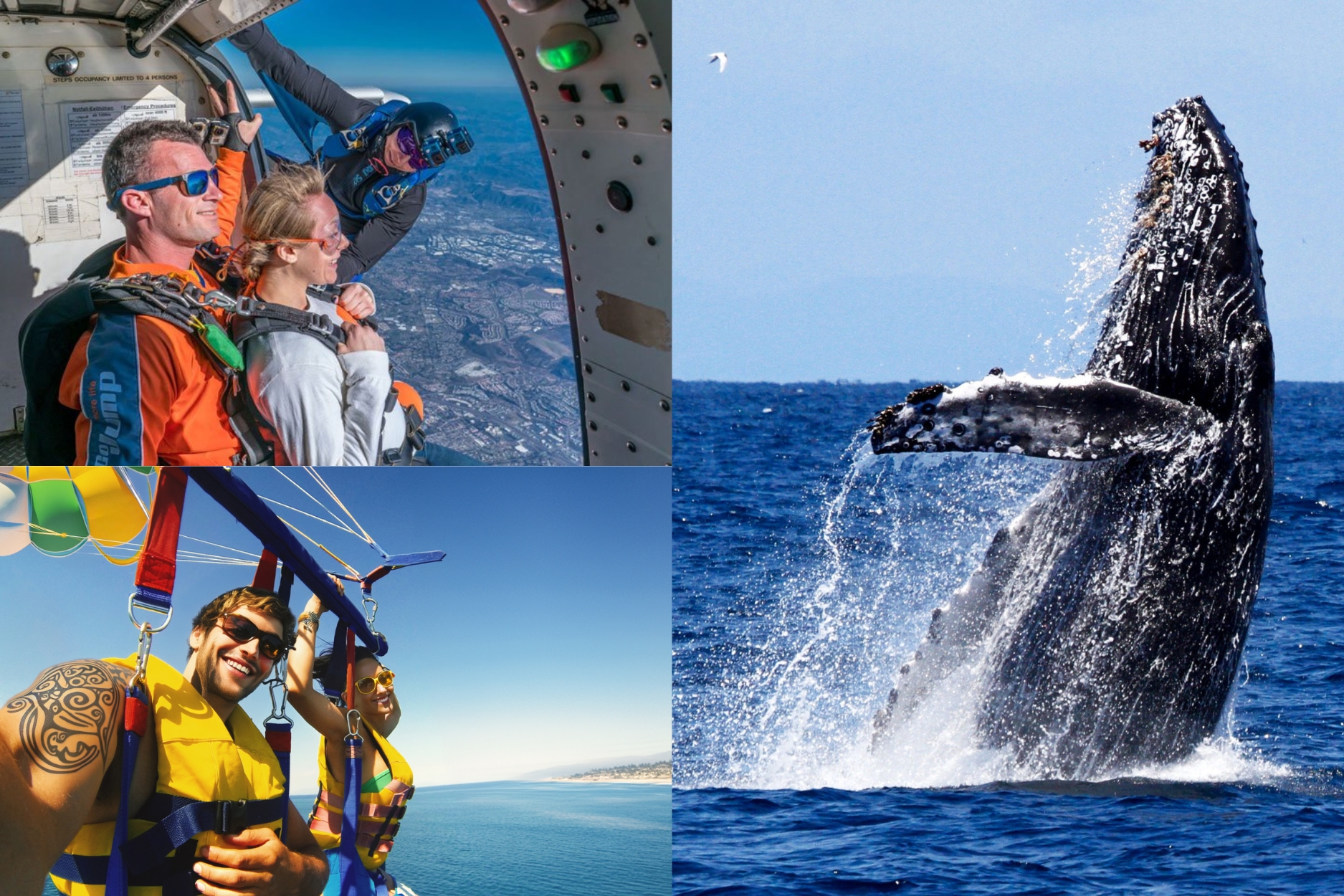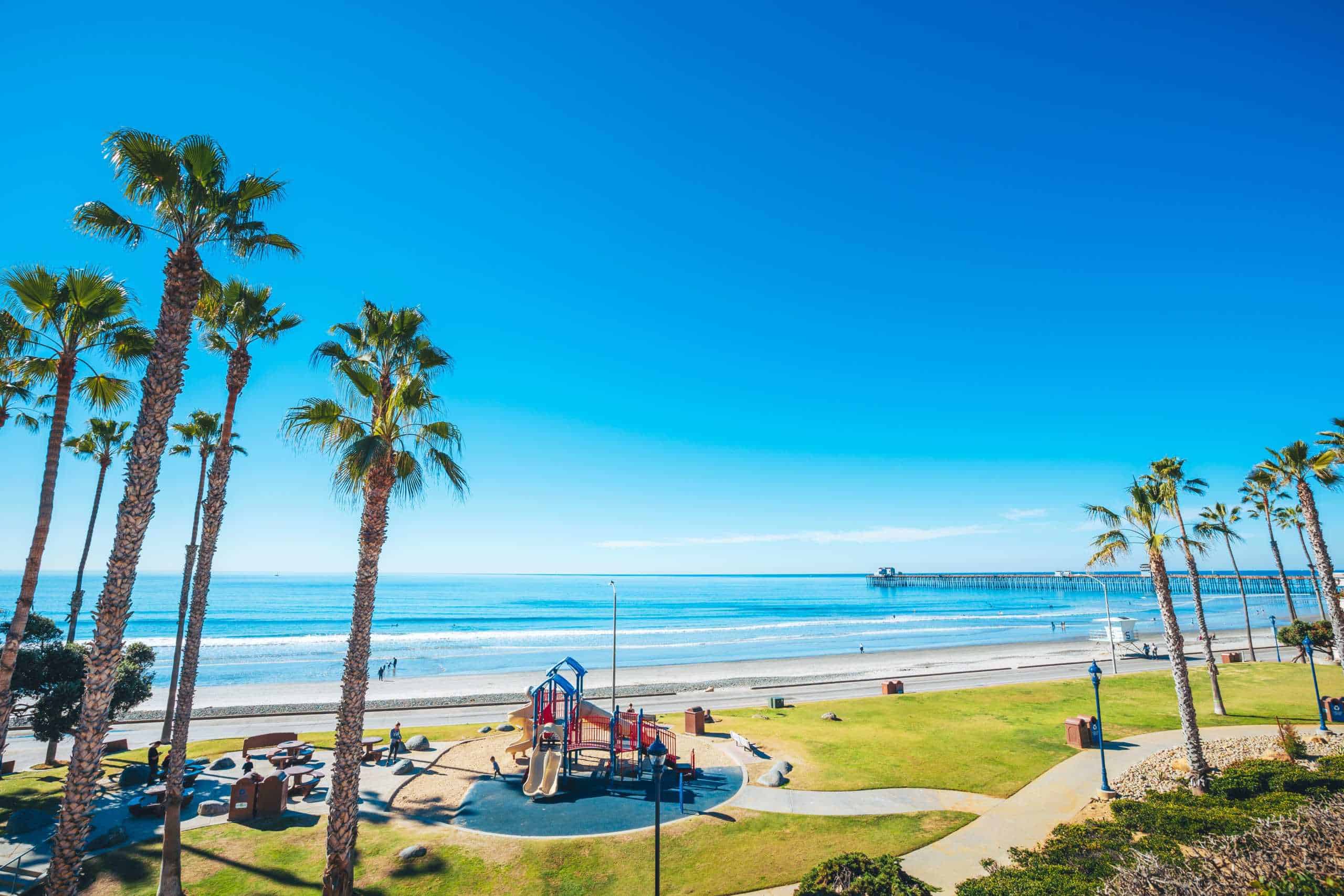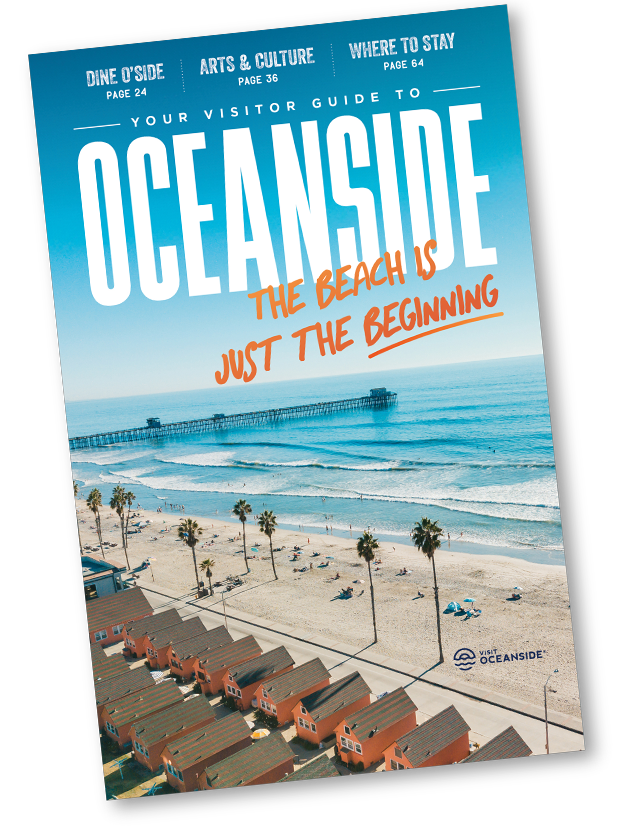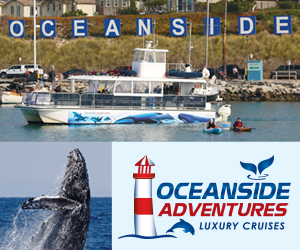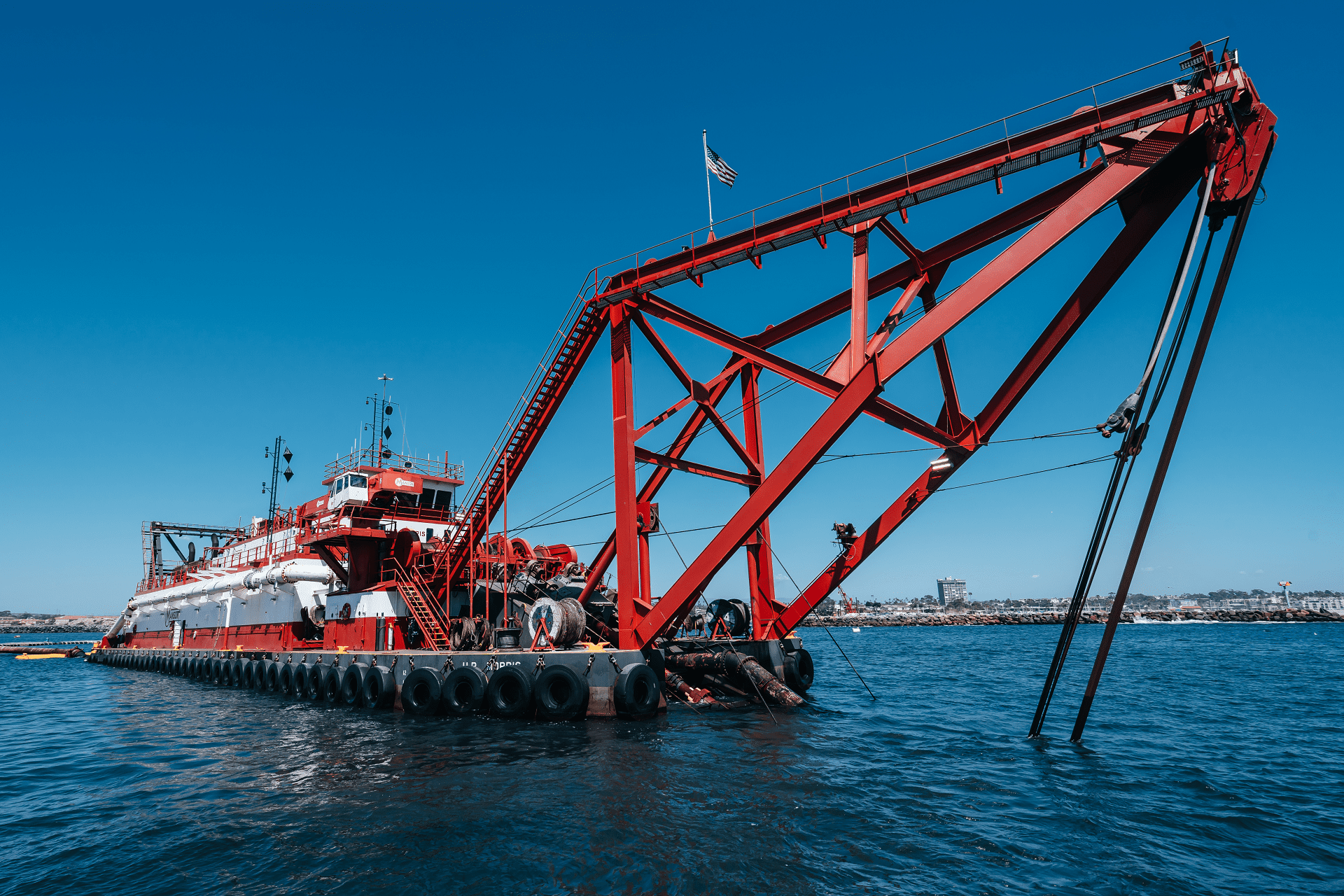
what is dredging?
We sat down with the Harbor Maintenance Supervisor for the City of Oceanside to answer your most common questions, and separate fact from fiction surrounding the annual beach and harbor maintenance protocol known as dredging.
What exactly is dredging?
Dredging is the process of digging up sand that has accumulated at the entrance of the Harbor and moving it elsewhere. The purpose is to keep the waterway deep enough to allow vessels to enter and exit the Harbor safely. Federal waterways throughout the United States are controlled by the United States Army Corps of Engineers (USACE), and the Oceanside Harbor is no different. The USACE regularly measures the depth of our harbor’s entrance as part of a federally funded program to maintain its safe operation. The City of Oceanside does not pay to have the Harbor entrance dredged or to have the sand placed on the beach. The Oceanside Harbor District serves as the host for the program.
Why does the City of Oceanside need to dredge?
The dredge is critical for maintaining safe access in and out of the Oceanside Harbor. Through natural migration, sand under the water’s surface drifts into the mouth of the harbor and accumulates making the entrance progressively shallower. Over time the entrance would become an obstacle for many vessels, in addition to the shallow water creating large waves further endangering vessels and their passengers. The dredging removes this excess sand from the harbor entrance and moves it to the Oceanside coastline allowing our beaches to stay wide and sandy. The amount of clean sand available each year to be placed on the beaches is dependent on how much excess sand fills in the harbor entrance each winter, so it can vary from year to year.
Is the dredging in Oceanside to be done mechanically or hydraulically?
The dredging is performed hydraulically. A survey is conducted by the USACE to map out the sand location and depth for the dredging vessel to utilize. The dredge has a hydraulically operated auger that combs the bottom of the entrance sucking sand into the intake. A very large pumps sucks the excess sand into a pipe, which is run along the beach to place the sand where it is needed. This is determined by the contractor and USACE. If the waves are large or the swell is very active the auger cannot maintain a steady contact with the sea bottom potentially damaging the auger. For that reason, even on a clear sunny day, dredging activity can be suspended to wait for calmer conditions.
Are you still able to access the beach?
Yes, visitors are still able to access the beach during this time and beach services are not interrupted during this process. Large pipes and heavy machinery are being used at varying locations on the beach; visitors are requested to stay away from the equipment (signage will be posted where the public is not allowed). There will be no events, weddings or surf contests held on any City or Harbor Beach during the dredge cycle.
If you are boating in the Harbor entrance you should know the dredge vessel will put out anchor lines that boats should not cross. There will be warnings on the dredge barge and warnings may be sent out to vessels via radio. When the operation begins they will move sand from the entrance of the Harbor and place it on Oceanside beaches. Sand is placed along the shoreline where there is little or no sand to support the dredge pipe out of the water. Once an adequate amount is placed along the shoreline the pipe will be extended down the beach to the Oceanside Municipal Pier and beyond. The majority of the sand removed from the harbor entrance will traditionally be placed on the south side of the pier. Heavy equipment is used to ensure the sand is placed where it is most beneficial, and portions of the beach will be closed off as the equipment is operated.
The fenced area around the south side of the San Luis Rey River is for the protection of the Western Snowy Plover birds. No one is allowed to enter this area with the exception of the environmental monitors hired by the dredge contractor.
Will there be issues with noise during the dredge?
When the product (sand) is taken from the bottom of the entrance a large number of rocks enter the pipe as well. These rocks bang against the pipe walls causing some noise surrounding the work zone. Another source of noise may be from the mechanical equipment used to put the pipes in place or move the sand up onto the beach. The equipment is only operated during daylight hours.
Are there any safety instructions
that any beach-goers need to be aware of?
YES!
- This is a very interesting project and many people would like to come and watch the placement of the pipe in the Harbor entrance. It is usually placed by heavy equipment from the shore to the water. The contractor is a professional and has taken all precautions to ensure this procedure is performed safely. However, in order to maintain a safe environment the public should keep a safe distance from this activity at all times. Please keep an eye on your children.
- The dredge pipe south of the San Luis Rey River will be exposed. The contractor will make ramps available for the public to safely cross over the pipe. Please use these ramps. Climbing onto the dredge pipe is prohibited and may be dangerous. A fall onto the sand may seem harmless but you can get hurt. Please, for your safety, stay off of the pipe.
- Much activity will be going on at the discharge site of the pipe. Sand, water and rocks will be spewing out of the pipe at a high volume. The public is not allowed near the discharge area and will still need to stay away from the discharge end of the pipe.
- Heavy equipment will be operating on the beach. The operators are high off the ground and their visibility around them is limited. Their focus is on the placement of the sand. Again their work area will be fenced off and they will have spotters on the ground. Please stay away from heavy equipment on the beach at all times. The fenced area south of the San Luis Rey River is designated as a protected area for the Western Snowy Plover. The Contractor is required to monitor that area for the duration of the project. We ask that the public not enter into the protected area at any time.
Where can I learn more about dredging in Oceanside?
Dredging is directed by the USACE. They contact the Oceanside Harbor with any changes in the schedule or procedure that might arise. Due to weather and other factors, the schedule can change daily. For current information, please visit the City of Oceanside Harbor website, Oceanside Harbor Facebook Page or call 760-435-4031.
Due to weather, grunion runs, and other factors, changes in the schedule do occasionally arise and delay the project.
The annual dredge generally takes 6-7 weeks.
2024 Dredge Updates
The 2024 dredge will begin the week of April 22; mobilization of equipment has begun. The average amount of sand dredged from the inlet annually and placed onto Oceanside beaches is usually between 200,000 and 300,000 cubic yards.
The operation should be completely wrapped up by late May or early June. Keep in mind that bad weather, high waves, or equipment issues can temporarily pause operations, which will cause this timeline to shift.
Safety measures planned during the dredging operation include a delineated pathway for moving heavy equipment, posted signs, flagmen, and a lead vehicle for tractors. No events in the area will be permitted during any portion of the dredge cycle. Environmental safety measures will also be implemented. Snowy Plover monitoring will be in place; a fence will be set up near the San Luis Rey River. The area will be monitored for grunion.



